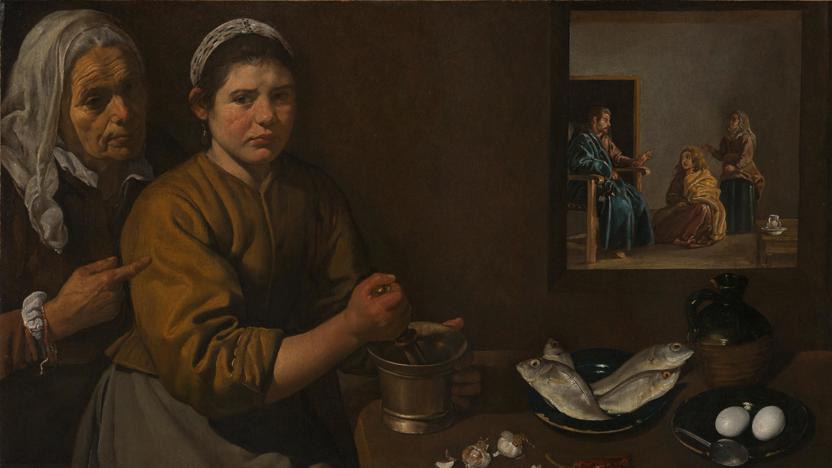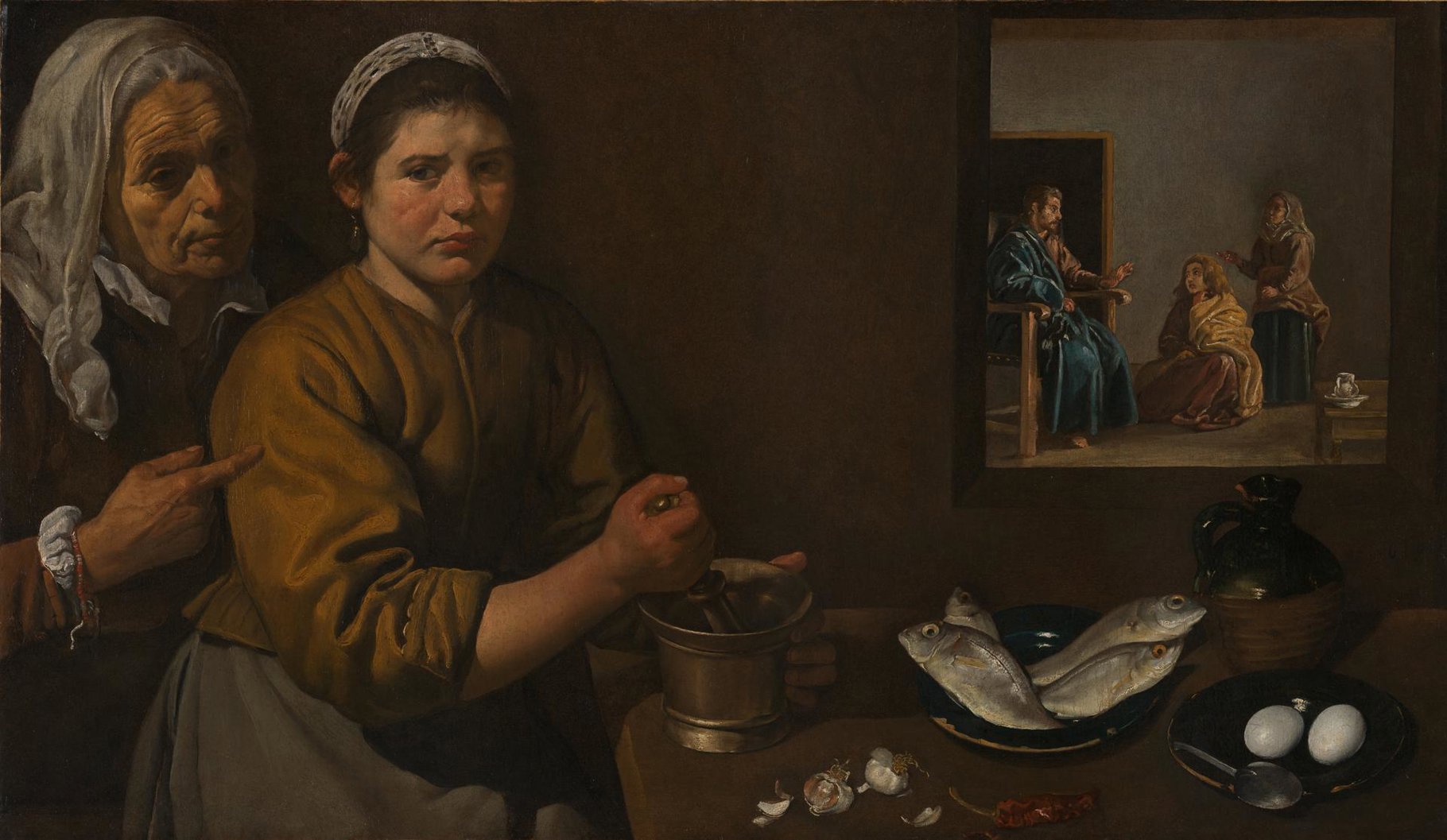Diego Velázquez's 'Christ in the House of Martha and Mary'
Audio description
This is a description of 'Kitchen Scene with Christ in the House of Martha' and Mary by Diego Velázquez. It is oil paint on canvas, probably painted in 1618.
It is 60 cm high and just over a metre wide. Its gilded frame is carved in relief, with a pattern of broad stylised leaf-shapes.
The painting is dark, in a palette of bitter browns and earthy tones, with silvery whites. It depicts a dim kitchen interior, with light entering from the left.
Filling the left half of the composition, are two women. They are shown from the hips upwards, turned towards a table top. The table fills the lower right half of the painting and is laid with food being prepared. The younger of the two women is at the edge of this table, the other woman behind her. In the upper right corner of the composition is a squarish framed section. Its width about one third of the whole picture, it depicts another scene, on a smaller scale. Its relationship to the rest of the painting isn’t immediately clear.
The younger woman is grinding something in a cylindrical pestle of cool shiny metal. She grasps the mortar with her reddened fist, paused in her work to look directly out at us. She wears a plain, chestnut brown fitted jacket, fastened up to the neck. Deep shadows fall on the folds of her sleeve, which is pulled up to reveal a sturdy forearm. At her waist, the beginnings of a thick woollen skirt. Her dark hair is covered by a wide white headband. Her expression is heavy, cheeks ruddy, and her eyes without shine.
The much older woman is looking over her shoulder. A white cloth covers her head and shoulders, allowing a glimpse of grey hair above a wrinkled forehead. She is clothed in deep brown. Her eyes are in shadow, as she reaches in front of the younger woman, gesturing with a pointed finger.
The items on the table are painted with astonishing naturalism. Furthest to the right is a black, glazed plate, with two gleaming white eggs next to an overturned metal spoon. Behind the eggs is an earthenware jug, half glazed, with a simple handle. In the centre of the table is a second, larger plate of four silvery, glistening fish with jellied, staring eyes. They are arranged in pairs, tails touching in the middle, heads spilling out over either side of the plate.
To the left of the fish are the dry papery skins of garlic cloves and a waxy red chilli pepper, possibly what the younger woman is grinding in the mortar and pestle.
The square insert, in the top right, is in a plain dark wood frame, and appears to be on the kitchen wall. It shows a man sitting on a chair turned to the right, in a bare interior. Two women face him, one at his feet, listening intently. He raises his hand in a halting gesture, or one of blessing. This is a scene from the Bible, when Christ reflects on the behaviour of two sisters: Mary prioritises contemplation, while Martha insists on her sister joining her at work in the kitchen.
It is unclear what this picture is. Some understand it as the Bible scene happening in another room, observed through a hole in the wall. Or even a mirror, reflecting another space. Or is it a painting, hanging inside the painting? Velazquez enjoyed playing games with how we perceive objects in space. Here, he might be inviting us to contemplate this biblical scene, set in the context of this kitchen narrative.


